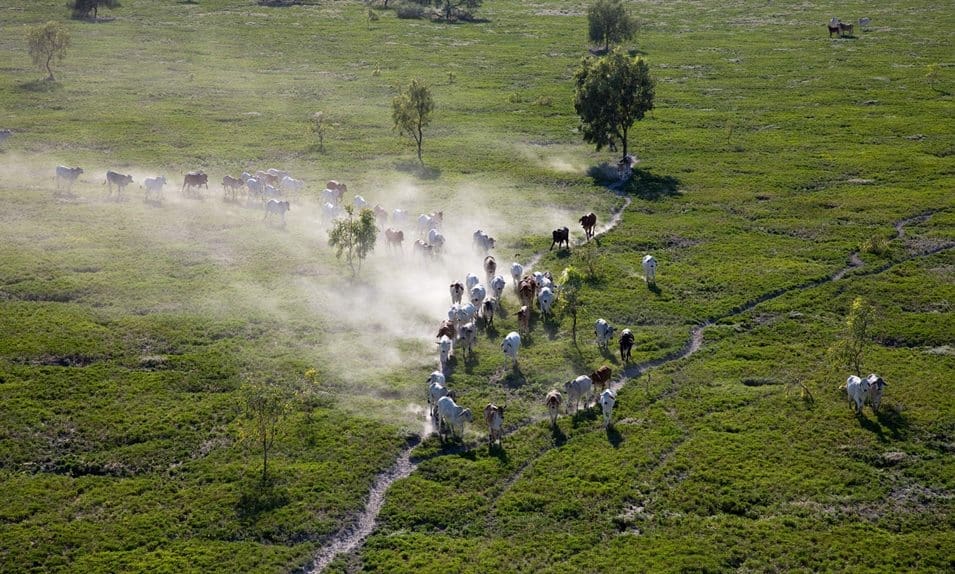
INVESTORS looking at potential development in the Northern Territory need to fully consider the acquisition of development permits, with some industry observers warning the process and variations in the time required could adversely impact on prices paid for property.
Pastoral land clearing applications are determined by the NT Pastoral Land Board in accordance with the Pastoral Land Act.
In comparison, clearing on freehold land is covered under the Planning Act – with the Department of Infrastructure Planning and Logistics assessing zoned land and the Department of Environment and Natural Resources considering unzoned land.
The issues surrounding land clearing (on all tenure types) and proposals for partial land use change via non-pastoral use (NPU) permits are complex, and are the topic of deep and continued debate between the government and various industry bodies.
Considerations before investment

Frank Peacocke HTW
Frank Peacocke, Herron Todd White’s Darwin-based valuer, said before making investment decisions, prospective purchasers in the NT should consider the current and changing state of play, particularly if the investment is based on potential development of ‘greenfield’ areas to a higher primary production use.
He urged parties to consider the following:
- No legislated timeframes in place as to how long a clearing application or NPUP will take (on the basis that assessment guidelines are followed by the applicant). Initial perceived development time frames may blow-out, meaning higher than budgeted (and significant) holding costs. Such losses, plus declining returns on capital invested (because the primary production will not happen as quickly as originally anticipated), are exacerbated if a premium has been paid for the property’s perceived development potential in the first place.
- An argument to move away from a ‘one size fits all’ approach to land clearing applications. For example, any land clearing applications above 5000ha must first pass through the NT Environmental Protection Authority. This policy is not actually legislation, however there would appear to be no flexibility around this requirement.
- Some land clearing proposals which require NPUPs for changes to areas of horticultural use cannot be assessed because groundwater licences cannot be issued due to absence of declared Water Allocation Plans in those areas. More government funding is required to complete WAPs.
- Many areas (pastoral in particular) have no detailed soil mapping (to the detailed Land Unit scale required), therefore the applicant bears the cost of having this done professionally. Other applicants might have government LU maps already available. This is not a level playing field, critics say. DENR needs more funding to complete the mapping (when, and if such funds are available).
- Applicants are left to decipher themselves the respective Federal and NT Environmental Protection Acts, and what is relevant to their application.
Uncertain administrative process
VPS Land Assessment and Planning is a Northern Territory based environmental and natural resource management consulting business established by Graeme Owen.
With knowledge and understanding of the development assessment process, Mr Owen collaborates with a range of stakeholders on opportunities for land clearing and land development.
He explained that the administrative processes (ie. the time taken to process applications and make decisions in relation land clearing and non-pastoral use) add a level of business uncertainty.
“There are no minimum time limits for the assessment of land clearing applications on pastoral land. The DENR advises that pastoral land clearing applications will take around six months. I know of some land clearing applications that have taken less time, but equally some that have taken considerably longer.”
In addition to administrative uncertainties, the climate of the Northern Territory provides additional challenges.
Mr Owen said there are preferred times for land clearing that revolve around soil moisture and access, which in turn are dependent on the wet season.
“Depending on local conditions, some producers may start clearing after the first effective rain at the start of the wet season, while others may start clearing at the end of the wet season. If a producer misses these windows of opportunity, they have to wait months until the next wet season.”
Mr Owen estimates a producer would need to factor between 12 and 24 months for a commercial greenfield agriculture development (that required both a land clearing and non-pastoral use permit) to get off the ground.
“The uncertainty around the land development process would likely impact a producer’s business plan and potentially the value of a property. That said, both government and other groups are investing in trials for new potential crops and interested parties should not be deterred and will transact if they take a longer-term view,” he said.
Premiums for potential?
HTW’s Frank Peacocke said there were freehold and pastoral properties across the NT that had land, water and climate – features that a prospective buyer might see as ripe for partial development for a higher primary production use.
“Such properties would normally attract a higher value rate ($/hectare or $/beast area value) than properties without such attributes,” he said. “In reality this is probably a premium that is reasonably worthwhile paying.”
However, Mr Peacocke warned that until potential purchasers had an iron clad development approval or an NPU permit in their hand, they should think twice before paying a full premium for that country.
“It is not enough to carry out pre-purchase due diligence hoping that a straightforward development permit or NPU permit will be forthcoming, then just buy the property, get the permit and start developing within a month or two.”
Mr Peacocke advised the purchase price should not be so high as to equate to the price payable for land, with approvals already in place.
“This should never be the case, but particularly in the NT at the moment given the vagaries around prospects for development. There has been the odd sale over the last three years where the property market has been so strong that buyers have unfortunately overlooked these potential hurdles.”
The last word goes to Graeme Owen who said the Territory remained a great place to invest, but warned those seeking to diversify to purchase with their eyes wide open, and be realistic about project development timeframes.
